
Top Goats Breeds For Milk
Top Goats Breeds For Milk
There are several goat breeds that are known for their milk production. Some of the top goat breeds for milk include
1. Alpine Goat
2. Nubian Goat
3. Saanen Goat
4. LaMancha Goat
5. Oberhasli Goat
6. Toggenburg Goat
7. Nigerian Dwarf Goat
1. Alpine Goat
The Alpine goat is known for its high milk production and is one of the most popular dairy goat breeds in the world.
Here are some details about Alpine goat milk production:
- Alpine goats are able to produce up to two gallons of milk per day, although the average is around one gallon per day.
- Their milk is high in butterfat and protein, making it ideal for cheese, yogurt, and other dairy products.
- The fat content of Alpine goat milk can range from 2.5% to 3.5%, while the protein content is typically around 3.5%.
- Alpine goat milk has a mild and sweet flavor, making it a popular choice for drinking as well as for cooking and baking.
- Like all dairy goats, Alpine goats need to be milked twice a day, typically in the morning and evening.
- They can be milked by hand or by machine, although machine milking is more common on commercial dairy farms.
- Alpine goats typically lactate for 10 months out of the year, with a two-month dry period before kidding (giving birth) and a two-month dry period after kidding.
- The length of lactation can vary depending on the individual goat, with some goats continuing to produce milk for up to 18 months.
Here are some details about the Alpine goat:
Physical Characteristics:
- The Alpine goat is a medium to large-sized breed with a sturdy build.
- They have erect ears and a straight nose with a slightly dished or straight profile.
- They come in a variety of colors, including black, brown, gray, and white.
- They have a short, smooth coat that is easy to care for.
Temperament:
- Alpine goats are known for their friendly and outgoing personalities.
- They are generally easy to handle and make good pets and show animals.
- They are also hardy and adaptable, able to thrive in a variety of environments.
Breeding and Reproduction:
- Alpine goats are seasonal breeders and typically breed in the fall for spring kidding.
- They are known for having multiple births, often having twins or triplets.
- They have a gestation period of approximately five months.
Overall, the Alpine goat is a versatile breed that is well-suited for dairy production, as well as for pets and show animals. They are hardy and easy to care for, making them a popular choice for farmers and hobbyists alike.
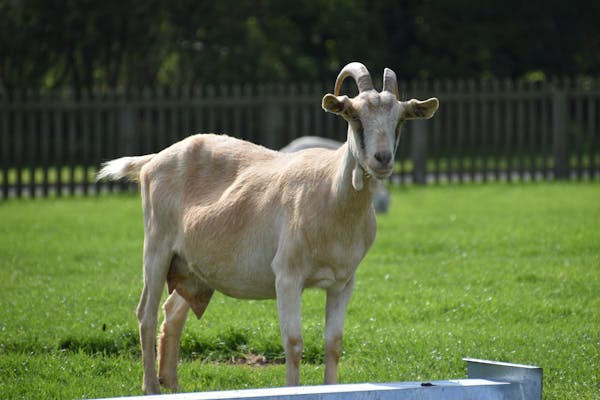
2. Nubian Goat
Nubian goats are known for their high butterfat content in their milk, which makes it ideal for cheese, butter, and other dairy products.
Here are some details about Nubian goat milk production:
- Nubian goats are able to produce up to two quarts of milk per day, although the average is around one quart per day.
- The butterfat content in their milk can range from 4% to 5%, which is higher than many other dairy goat breeds.
- The protein content in Nubian goat milk is typically around 3.5%.
- Their milk is creamy and flavorful, with a slightly sweet taste that is popular among dairy enthusiasts.
- Nubian goats can produce milk year-round, although their production may decrease in the winter months.
- Like all dairy goats, Nubian goats need to be milked twice a day, typically in the morning and evening.
- They can be milked by hand or by machine, although machine milking is more common on commercial dairy farms.
- Nubian goats typically lactate for 10 months out of the year, with a two-month dry period before kidding (giving birth) and a two-month dry period after kidding.
- The length of lactation can vary depending on the individual goat, with some goats continuing to produce milk for up to 18 months.
Here are some details about the Nubian goat:
Physical Characteristics:
- The Nubian goat is a large breed with a sturdy build.
- They have long, drooping ears and a Roman nose with a convex profile.
- They come in a variety of colors, including black, brown, and tan.
- They have a short, fine coat that is easy to care for.
Temperament:
- Nubian goats are known for their friendly and outgoing personalities.
- They are often kept as pets as well as for milk production.
- They are intelligent and curious animals, and can be trained to do tricks or to pull carts.
Breeding and Reproduction:
- Nubian goats are seasonal breeders and typically breed in the fall for spring kidding.
- They are known for having large, single births, although twins and triplets are also common.
- They have a gestation period of approximately five months.
Overall, the Nubian goat is a versatile breed that is well-suited for dairy production as well as for pets and show animals. With their high butterfat content, creamy milk, and friendly personalities, they are a popular choice for farmers and hobbyists alike.
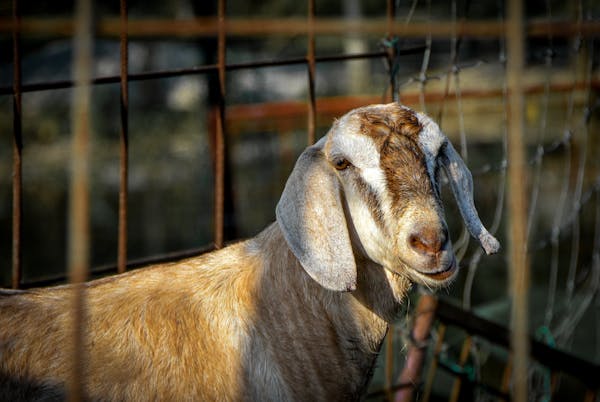
3. Saanen Goat
Saanen goats are one of the most popular dairy goat breeds in the world and are known for their high milk production.
Here are some details about Saanen goat milk production:
- Saanen goats are able to produce up to three gallons of milk per day, although the average is around two gallons per day.
- Their milk has a relatively low butterfat content, typically ranging from 2.5% to 3.5%.
- The protein content in Saanen goat milk is typically around 3.2%.
- Their milk has a mild and slightly sweet taste, making it a popular choice for drinking as well as for cheese, yogurt, and other dairy products.
- Saanen goats can produce milk year-round, although their production may decrease in the winter months.
- Like all dairy goats, Saanen goats need to be milked twice a day, typically in the morning and evening.
- They can be milked by hand or by machine, although machine milking is more common on commercial dairy farms.
- Saanen goats typically lactate for 10 months out of the year, with a two-month dry period before kidding (giving birth) and a two-month dry period after kidding.
- The length of lactation can vary depending on the individual goat, with some goats continuing to produce milk for up to 18 months.
Here are some details about the Saanen goat:
Physical Characteristics:
- The Saanen goat is a medium to large-sized breed with a sturdy build.
- They have short, white hair and a straight or slightly concave profile.
- Their ears are medium to large in size and point upwards.
- They have a calm and docile temperament, making them easy to handle and work with.
Temperament:
- Saanen goats are known for their docile and friendly personalities.
- They are often used as companion animals as well as for milk production.
- They are intelligent and curious animals, and can be trained to do tricks or to pull carts.
Breeding and Reproduction:
- Saanen goats are seasonal breeders and typically breed in the fall for spring kidding.
- They are known for having large, single births, although twins and triplets are also common.
- They have a gestation period of approximately five months.
Overall, the Saanen goat is a versatile breed that is well-suited for dairy production as well as for pets and show animals. With their high milk yield, mild flavor, and docile temperament, they are a popular choice for farmers and hobbyists alike.
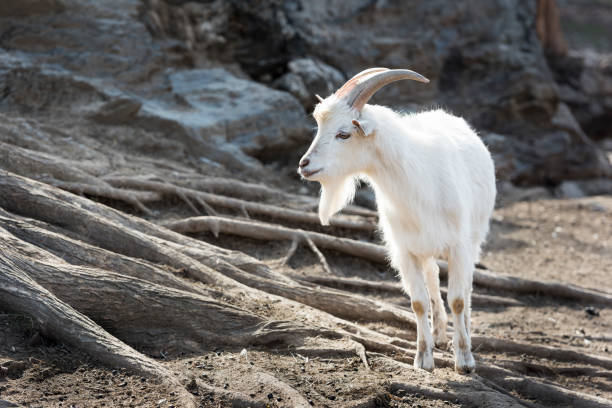
4. LaMancha Goat
LaMancha goats are a breed of dairy goats that are known for their high milk production and butterfat content.
Here are some details about LaMancha goat milk production:
- LaMancha goats are able to produce an average of 1 to 2 gallons of milk per day, with some individuals producing up to 3 gallons per day.
- Their milk has a high butterfat content, typically ranging from 3.5% to 4%.
- The protein content in LaMancha goat milk is typically around 3.2%.
- Their milk has a sweet and mild flavor, making it a popular choice for cheese, yogurt, and other dairy products.
- LaMancha goats can produce milk year-round, although their production may decrease in the winter months.
- Like all dairy goats, LaMancha goats need to be milked twice a day, typically in the morning and evening.
- They can be milked by hand or by machine, although machine milking is more common on commercial dairy farms.
- LaMancha goats typically lactate for 10 months out of the year, with a two-month dry period before kidding (giving birth) and a two-month dry period after kidding.
- The length of lactation can vary depending on the individual goat, with some goats continuing to produce milk for up to 18 months.
Here are some details about LaMancha goats:
Physical Characteristics:
- LaMancha goats are a medium-sized breed with a sturdy build.
- They have a straight or slightly dished profile and a short, glossy coat that can come in a variety of colors.
- The most distinctive feature of LaMancha goats is their ears, which are very short and can be either "gopher" ears (with no external ear flap) or "elf" ears (with a small external ear flap).
- They have a calm and friendly temperament, making them easy to handle and work with.
Breeding and Reproduction:
- LaMancha goats are seasonal breeders and typically breed in the fall for spring kidding.
- They are known for having relatively small litter sizes, with an average of 1 to 2 kids per birth.
- They have a gestation period of approximately 5 months.
- LaMancha goats can be bred for meat production as well as for dairy production, although their small size means that they are not typically used for meat in commercial farming operations.
Overall, LaMancha goats are a popular breed among dairy farmers and hobbyists. With their high milk yield, high butterfat content, and unique ear shape, they are a distinctive and valuable addition to any goat herd.
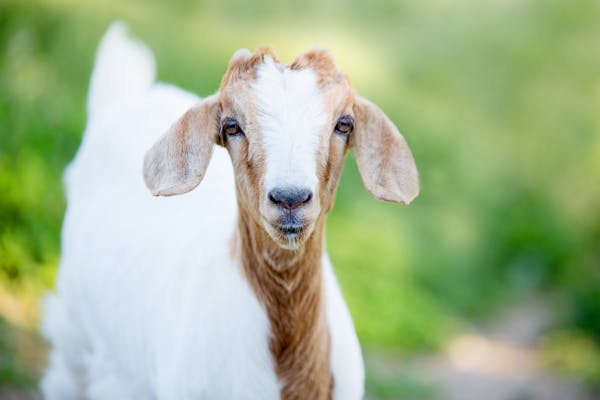
5. Oberhasli Goat
Oberhasli goats are known for their high milk production and high butterfat content, making them a popular choice among dairy farmers.
Here are some details about Oberhasli goat milk production:
- Oberhasli goats can produce an average of 1 to 2 gallons of milk per day, with some individuals able to produce up to 3 gallons per day.
- Their milk typically has a butterfat content of 3.5% to 4% and a protein content of around 3.2%.
- Oberhasli goats have a lactation period of approximately 10 months, although their milk production may begin to decline after the first few months.
- Their milk has a mild and sweet flavor, making it a popular choice for cheese, yogurt, and other dairy products.
- Oberhasli goats are efficient milk producers, meaning that they are able to produce a high volume of milk with relatively low levels of feed and other resources.
Here are some details about Oberhasli goats:
Physical Characteristics:
- Oberhasli goats are a medium-sized breed with a compact build and a distinctive color pattern. Their coat is a deep red or bay color with black markings on their face, legs, and back.
- They have erect ears and a straight or slightly dished profile.
- They are a hardy breed and are able to adapt well to a variety of climates and environments.
- Oberhasli goats are known for their calm and friendly temperament, making them easy to handle and work with.
Breeding and Reproduction:
- Oberhasli goats are seasonal breeders and typically breed in the fall for spring kidding.
- They have a gestation period of approximately 5 months.
- Oberhasli goats are also used for meat production, although their small size means that they are not typically used for meat in commercial farming operations.
Overall, Oberhasli goats are a popular breed among dairy farmers and hobbyists. With their striking appearance, high milk yield, high butterfat content, and friendly temperament, they are a valuable addition to any goat herd.
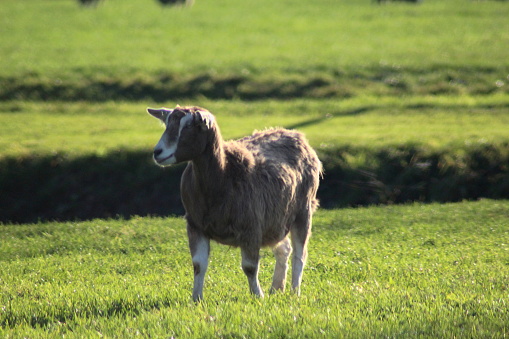
6. Toggenburg Goat
Toggenburg goats are a Swiss breed known for their high milk yield and rich, flavorful milk. They have a distinctive brown coat color with white markings and are often used in the production of goat cheese.
Here are some details about Toggenburg goat milk production:
- Toggenburg goats are a popular dairy breed, known for their high milk production and high butterfat content.
- Their milk typically has a butterfat content of 3.5% to 4% and a protein content of around 3.2%.
- Toggenburg goats can produce an average of 1 to 2 gallons of milk per day, with some individuals able to produce up to 3 gallons per day.
- Their milk has a rich and creamy flavor, making it a popular choice for cheese, yogurt, and other dairy products.
Here are some details about Toggenburg goats:
Physical Characteristics:
- Toggenburg goats are a medium-sized breed with a sturdy build and a distinctive color pattern. Their coat is a light fawn or chocolate brown color with white or cream markings on their face, legs, and tail.
- They have erect ears and a straight or slightly dished profile.
- They are a hardy breed and are able to adapt well to a variety of climates and environments.
- Toggenburg goats are known for their calm and friendly temperament, making them easy to handle and work with.
Breeding and Reproduction:
- Toggenburg goats are seasonal breeders and typically breed in the fall for spring kidding.
- They have a gestation period of approximately 5 months.
- Toggenburg goats are also used for meat production, although their small size means that they are not typically used for meat in commercial farming operations.
Overall, Toggenburg goats are a popular breed among dairy farmers and hobbyists. With their distinctive color pattern, high milk yield, high butterfat content, and friendly temperament, they are a valuable addition to any goat herd.
7. Nigerian Dwarf Goat
Nigerian Dwarf goats are known for their high milk production relative to their small size.
Here are some details about Nigerian Dwarf goat milk production:
- Nigerian Dwarf goat milk typically has a high butterfat content of 6% to 10%, making it a popular choice for cheese and other dairy products.
- The milk also has a high protein content of around 3.5%.
- Nigerian Dwarf goats can produce an average of 1 to 2 quarts of milk per day, with some individuals able to produce up to 3 quarts per day.
- Milk production can vary depending on factors such as the goat's diet, age, and overall health.
- Nigerian Dwarf goats are known for their persistent lactation, which means that they can produce milk for an extended period of time, often up to two years without the need for re-breeding.
- Proper care and nutrition, including regular milking and feeding a balanced diet, can help to maximize milk production in Nigerian Dwarf goats.
Here are some details about Nigerian Dwarf goats:
Physical Characteristics:
- Nigerian Dwarf goats are a small breed, typically weighing between 50 and 75 pounds and standing 17 to 19 inches tall at the shoulder.
- They come in a wide range of colors and patterns, including black, brown, white, and various shades of gray and cream.
- Nigerian Dwarf goats have a friendly and sociable temperament, making them popular as pets and for hobby farming.
Breeding and Reproduction:
- Nigerian Dwarf goats are a seasonal breeder and typically breed in the fall for spring kidding.
- They have a gestation period of approximately 5 months.
- Nigerian Dwarf goats are also used for meat production, although their small size means that they are not typically used for meat in commercial farming operations.
Overall, Nigerian Dwarf goats are a popular breed among dairy farmers and hobbyists due to their small size, high milk yield, and friendly temperament. They are a great choice for those with limited space or who are looking for a smaller breed of dairy goat.
Blog Upload on - March 2, 2023
Views - 2158

posted By -
Animals Super Store
Related Posts
-
 Top 10 Longest And Heaviest Crocodiles
Top 10 Longest And Heaviest Crocodiles
March 1, 2023 -
Top 5 Supplements for Goats
Nov. 9, 2022 -
 Types of All Goats Breed Name A to Z
Types of All Goats Breed Name A to Z
Jan. 17, 2023 -
Maharashtra Bird Helpline
Aug. 30, 2022 -
Dog Diseases
April 4, 2022 -
 DELHI BIRD & ANIMAL HELPLINE
DELHI BIRD & ANIMAL HELPLINE
Aug. 27, 2022 -
King Cobra
April 19, 2023 -
Sheep Farming
May 9, 2022


I see that your site is very informative, and every article is better than any other website's blog and articles. Your blog contains more information than any other. I think you are one of the best informative article writers, also I am sure you are. Somehow, I found another informative blog site that contains more information same as you. If you want more information about farming, then you can visit farmingplan.com sites. Farming Plan